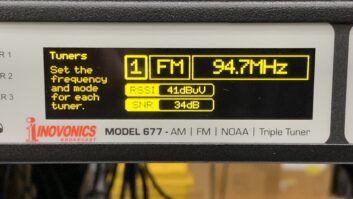I learned a fact the other day, one I would like to share with you. Now it may seem at first that Lampen has finally flipped his lid, so bear with me for a paragraph or two.
Some 13.7 billion years ago the Big Bang occurred.
String theorists believe this produced a duotrigintillion (1099) strings of energy, or maybe a lot more.
In the first few microseconds, these settled into the simplest atom, hydrogen, and bits of a few other elements.
Hydrogen is one proton, one electron. The universe is still 75 percent hydrogen. Now all this hydrogen floated around in space, where gravity made a couple of hydrogen atoms stick (weakly) together, then a couple more, then a ball of hydrogen. Then the balls stuck to each other, bigger and bigger, until the pressure at the center of the ball got higher and higher and finally reached around 10 million pounds per square inch.
That pressure fused one hydrogen atom into another hydrogen atom, creating helium — the next element on the periodic table.

The Periodic Table Since the helium atom weighs less than two hydrogen atoms, the difference in weight is converted to energy. (The actual reaction is slightly more complicated than this, but you astrophysicists who read Radio World will allow this condensed version.)
The energy (E) created from the fusion of the two hydrogen atoms is equal to the mass of the difference in weight between the helium atom and the two hydrogen atoms times a huge number: the speed of light squared! Or E=mc2. That’s a whole lot of energy from a tiny amount of mass.
This energy was transferred from atom to atom, working its way through the ball of hydrogen. It took 150,000 years for that energy to travel from the center of the ball of hydrogen to the surface, and another eight minutes to reach the earth. And God said, “Let there be light!”
Meanwhile inside this star (that’s what we call this ball of hydrogen, a “star”), the helium was squeezed together into lithium. The lithium was squeezed into beryllium, and so on.
In a star the size of our sun, there is enough pressure to squeeze out all the elements up to iron (element 26 “Fe”). Carbon, hydrogen, nitrogen, oxygen … all the stuff we are made of came from the inside of stars maybe very much like our sun.
These early stars lived a few billion years, more or less, and died, some quietly, some not so quietly. Some exploded as supernovae and the pressure of those explosions was so great that it produced all the other elements in nature.
It is believe that this happened at least twice before in our neighborhood, that there were stars that were born and died where our sun (and we) now live. And when our sun was formed, it formed from much of the starstuff left from its predecessor suns. The planets, including earth, coalesced from those same star-leftovers.
Thus for the existence of all the elements heavier than iron, we owe a supernova that, in its death-throes, created them: silver, tin, gold, lead and many others. And one of these was copper.
So next time you hold a copper wire, think about the fact that you are holding the product of a supernova! Thanks to a star that lived and died violently billions of years ago, you can now hook up your facility.
Copper, of course, is mined. There are copper mines all over the world. The largest of the copper-producing countries are (in order) Chile, Russia, the United States, Canada and Zambia.
Volatility in the price of copper typically has little to do with mines. In fact, they’re opening more, especially in China. It’s all about “speculation” and the commodities markets.
Copper is then smelted (refined) with different grades. The process is called “electrolytic tough pitch” and produces copper with a very high degree of purity.
In the United States, most copper users go by the ASTM (American Society of Testing & Materials) grading system. This is where we get all those nines: ASTM B115, for instance, is 99.95 percent pure. ASTM B170 is 99.995 percent pure. You get the idea.
This is why when someone says they use “oxygen-free copper,” I ask what purity, how many 9s are in their copper. Most of the time this elicits a blank stare. Sometimes they understand but don’t know. Rarely, they actually tell me the number of nines.
Can you measure purity? Of course you can. It shows up as (slightly) lower resistance per unit length. Can you hear the difference in a speaker cable? Well, that depends on whom you talk to. If you can hear the difference, spend those big bucks. If you can’t, stick with ASTM B115. That’s good stuff. Of course, I am sure there are some manufacturers who might say that ASTM B115 is “oxygen-free.”
Then they start arguing about how many nines are appropriate. And with each added nine the price of that copper, and the cable made with it, goes up. So if you care about this kind of thing, ask the question: How many nines?
Steve Lampen has worked for Belden for 16 years and is multimedia technology manager. His book”The Audio-Video Cable Installer’s Pocket Guide” is published by McGraw-Hill.
Past Wired for Sound columns are archived at radioworld.com.












